Exploring Tokyo’s Largest Ethnic Neighborhoods
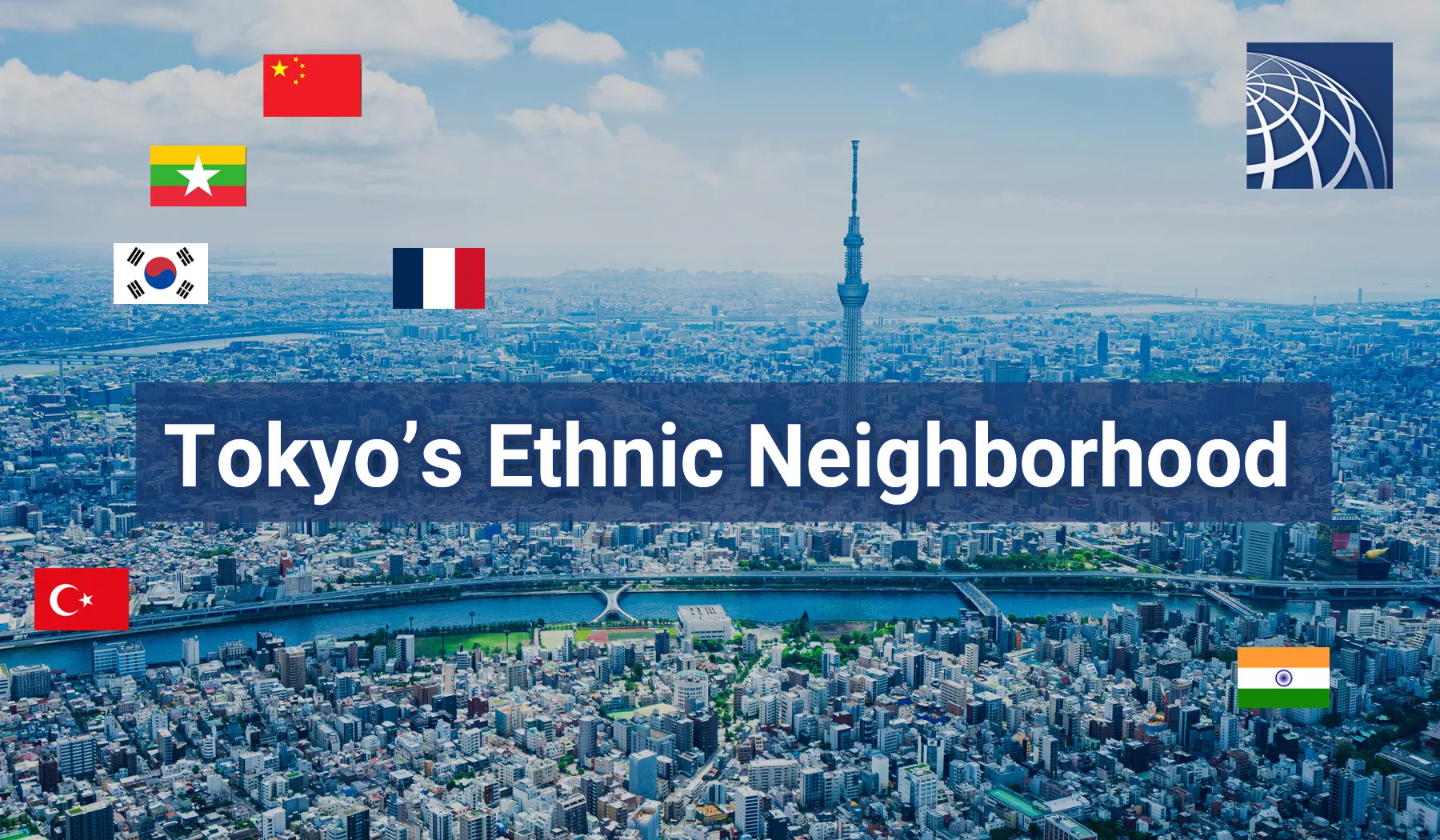
Over the last few decades, the number of foreigners living, studying, and working in Japan has dramatically increased. There are now foreigners living throughout Japan, from the north of Hokkaido to the southern islands of Okinawa. However, there are a number of areas that have developed as international cultural hubs for foreigner populations.
These often vary by nationality, making each area a unique experience when exploring Japan’s major cities, including Tokyo. Here we will look into some of the biggest culturally diverse areas in Tokyo and what makes them unique.
Exploring Ethnic Neighborhoods in Tokyo
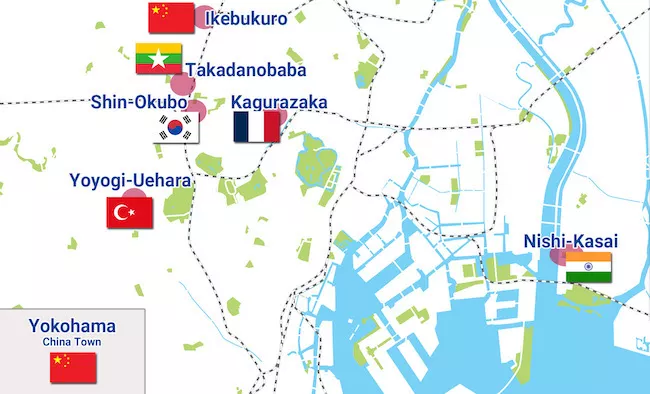
There are many areas in Tokyo where a large concentration of foreign residents has created a new and different atmosphere. This often includes restaurants, cafés, and businesses focused around a specific ethnicity and their customs and culture.
French

The district of Kagurazaka and Iidabashi in Shinjuku-ku is sometimes considered a “French town,” largely due to the influence of the language school, Institut Francais Tokyo, an official institution of the French government. Many French restaurants are located in the area and there are many French residents.
Turkish
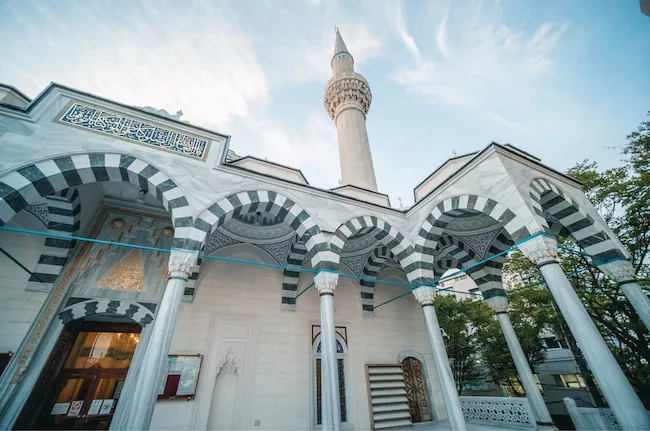
Yoyogi-Uehara in Shibuya-ku is also well-known for its Turkish population. It is also home to a Turkish mosque and cultural center, which allows and encourages visitors to learn about Turkish culture.
Korean
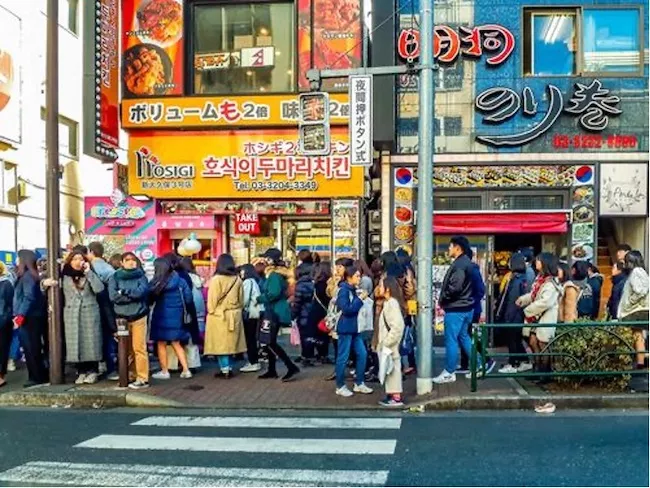
Japan has quite a large Korean population, and so it is no surprise that there are large neighborhoods with predominantly Korean residents and businesses. One of the largest is Shin-Okubo in Shinjuku-ku. The neighborhood has many authentic restaurants specializing in various types of Korean cuisine. This covers everything from the popular Korean BBQ, to traditional dishes and even Korean street food.
As Korean pop culture has become more popular and well-known worldwide, the many shops selling Korean beauty products, skin care, music and media goods, and apparel have continues to bring in more of the local youth. Because of this, Shin-Okubo has become a popular hang-out area for young people in Japan looking to enjoy Korean culture.
Indian

Nishi-Kasai in Edogawa-ku sometimes referred to as “Little India” due to its small but vibrant Indian community. Jagmohan Chandrani, a long-term resident, is sometimes known as the “father” of Little India, due to his widespread influence on the area. He started by importing Indian black tea to Japan and has gone on to support international schools, cultural centers, and Indian businesses during his time in Nishi-Kasai.
The neighborhood is now also home to a Hare Krishna temple and many community centers.
Nishi-Kasai is one of the best areas to visit to get a large variety of spices and ingredients without the price tag of most international grocery stores in Tokyo. It also has some of the best authentic Indian restaurants in the city. At certain times of year, there are cultural festivities, making it an exciting experience if you time your visit well.
Chinese (Yokohama)
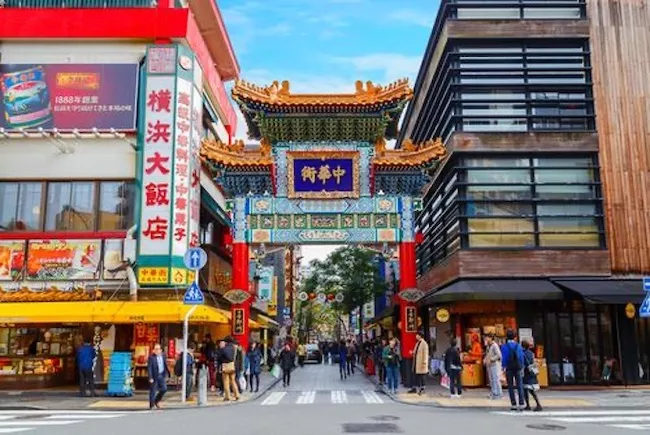
A short train ride to the south of Tokyo is Yokohama, home to the largest Chinatown in Japan. Yokohama is well-known as an international city, due to being a port city and one of the first ports in Japan to open up to the world. Chinatown was established around this time and has continued to grow since.
There are many wonderful Chinese restaurants serving authentic cuisine from various regions of China; shops selling Chinese ingredients, books, games, and various other products; and community centers to learn about Chinese culture.
Festivals are held in accordance with Chinese cultural tradition, such as for the Lunar New Year. Visiting at a time when you can experience not only the food and products, but also the cultural festivities, is a great way to enjoy Yokohama’s Chinatown.
Chinese (Ikebukuro)
For a different Chinese experience within Tokyo, is Ikebukuro in Toshima-ku has been growing as an area with many Chinese businesses. While it is generally known as a destination for shopping and entertainment, in recent years a number of Chinese businesses have started to spring up. These are often less catered to tourists than in the larger Yokohama Chinatown, and some shops operate mostly in Chinese. The restaurants largely serve the cuisine of north-eastern China, providing a unique and interesting culinary experience.
Myanmar

Takadanobaba in Shinjuku-ku is an interesting example of a more niche cultural neighborhood. Located close to Waseda University, it is home to a large number of residents from Myanmar. Many of these residents first came to Japan as refugees, making their experience very different from many other foreign residents. Over time, a number of immigrant-run shops have sprung up, offering a small taste of Myanmar’s culture. These include restaurants serving Myanmar cuisine, beauty salons, shops offering traditional ingredients, imported products, and more.
One of the oldest restaurants, Mingaraba, offers a range of traditional dishes from Myanmar. There is also a cultural center that encourages learning about the culture of Myanmar and offers lessons in the language, cuisine, and how to play the saung, a traditional harp instrument.
Takadanobaba is a great place to visit if you are interested in experiencing a culture that is often under-represented and underappreciated.
Explore the Best of Tokyo
The increase in foreigners becoming long-term residents in Japan has led to a wonderful flourishing of diverse and culturally rich neighborhoods throughout the country’s major cities. This exhibits through the residents, the businesses, and the food that is celebrated and enjoyed in these areas. It also allows for a range of unique experiences when visiting. We hope you will take the time to explore some of the most populated and most popular ethnic neighborhoods that Tokyo has to offer.
If you would like to bring international culture and cuisine to your home, we suggest using our helpful guides to international supermarkets in Tokyo, online shopping options for international ingredients, and living a halal-friendly lifestyle while in Japan.

- Rental Apartments & Houses in Tokyo
- Listings of popular and luxurious rental apartments, condominiums, and houses designed with expats in mind.

- Apartments & Houses for Sale in Tokyo
- Listings of apartments, condominiums, and houses available for purchase in Tokyo.



















